2024
Young Musicians
Concerto Competition Winners
Sat, Sep 28, 2024, 7:00 pm
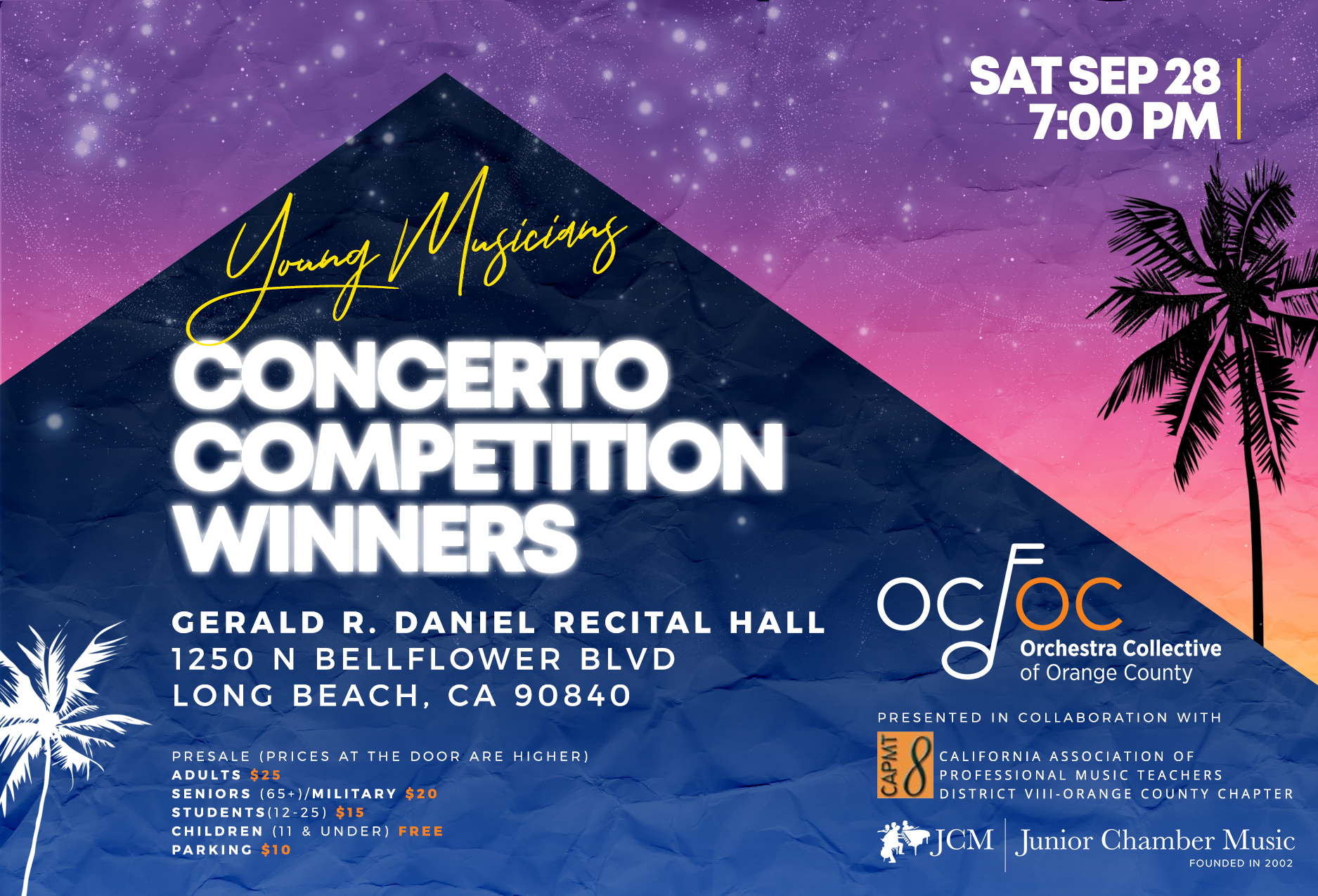
David Rentz, music director & conductor
Program
Julius Conus
(1869 – 1942)
Violin Concerto in E minor
-
-
- Allegro molto
-
Cameron Oates
violin
Jenő Hubay
(1858 – 1937)
Hejre Kati, Op. 32, No. 4 (Hungarian Csárdás)
William Lin
violin
Edward Elgar
(1857 – 1934)
Cello Concerto in E minor, Op. 85
-
-
- Allegro – Moderato – Allegro, ma non-troppo – Poco più lento – Adagio
-
Arianna Lai
cello
Intermission
AWARDS CEREMONY
Presented by Junior Chamber Music and the California Association of Professional Music Teachers District VIII-Orange County Chapter
Felix Mendelssohn
(1809–1847)
Piano Concerto No. 1 in G minor, Op. 25
-
-
- Presto – Molto allegro e vivace
-
Seojin Park
piano
Felix Mendelssohn
(1809–1847)
Violin Concerto No. 1 in G minor, Op. 25
-
-
- Vorspiel (Allegro moderato)
- Vorspiel (Allegro moderato)
-
Damon Ko
violin
Pyotr Ilyich Tchaikovsky
(1840 – 1893)
Variations on a Rococo Theme, Op. 33
Noah Choi
cello
Meet the Artists
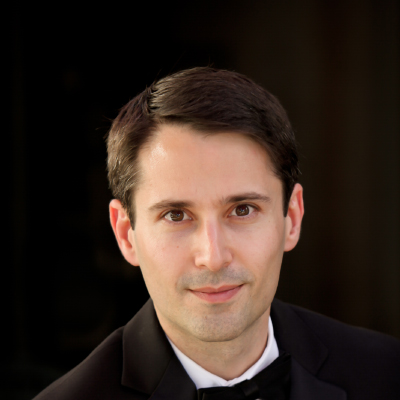
David Rentz
Conductor and Music Director
OCofOC Music Director and conductor
Learn More About David
David Rentz is Professor of Music at Chaffey College, where he heads the choral and vocal music programs and teaches music theory. He is also Adjunct Professor of Music at Claremont Graduate University, where he supervises masters and doctoral programs in choral and orchestral conducting, and Co-Director of Music and Fine Arts at Claremont United Church of Christ. He has taught and conducted choral ensembles at the University of Wisconsin-Madison, Yale University, and, most recently, Pomona and Scripps Colleges. He is also a founding co-conductor of C3LA (Contemporary Choral Collective of Los Angeles) and served as music director of the Orange County Symphony from 2011 to 2016.
From 2005 to 2010, he lived in New York City, where he worked as choral director at The Brearley School, a K-12 girls preparatory school on the Upper East Side of Manhattan. A busy freelancer, he was also assistant conductor of the critically-acclaimed New Amsterdam Singers and a principal conductor and founding member of C4: the Choral Composer/Conductor Collective, a collectively-run ensemble devoted to performing works written in the last twenty-five years. David’s love of early music led him to found and direct Guildsingers, a professional vocal ensemble specializing in 15th-century Franco-Flemish repertoire.
David received his B.Mus. summa cum laude from Washington University in Saint Louis, where he was a Mylonas Scholar in the Humanities, inducted into Phi Beta Kappa, and a finalist for the Rhodes Scholarship. He earned his M.M at the University of Wisconsin-Madison (Beverly Taylor), and received his M.M.A. and D.M.A. from the Yale University School of Music (Marguerite Brooks and Simon Carrington), where he was co-director of the University Chapel Choir and a member of the internationally-renowned Yale Schola Cantorum. He has received fellowships and grants from the Yale alumniVentures program and the National Endowment for the Humanities and, in 2015, was named guest professor at Xiamen University (China). In demand as an adjudicator and clinician, he has served in those capacities for the Lansum International Choral Competition, the Claremont College Orchestra Concert Orchestra Concerto Competition, the Oremor Choral Competition, the Chaffey Joint Union High School District Choral Festival, the Southern California Vocal Association, and many others.
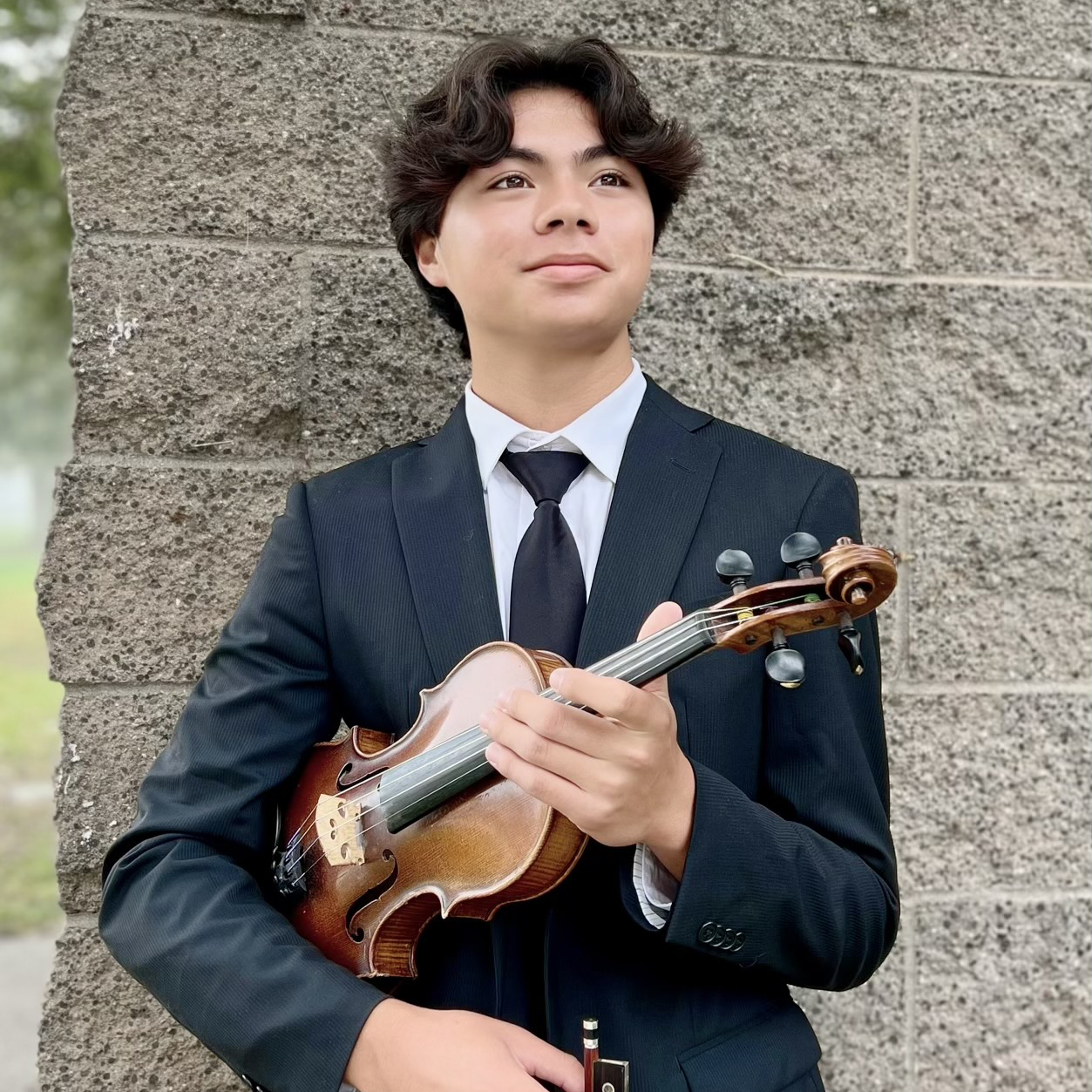
Cameron Oates
violin
First Place winner CAPMT8 Category C (21 & under)
Learn More About Cameron
Cameron Oates is currently a senior at Oxford Academy. His love for music began when he took piano lessons at four years old. Not long after, he was drawn to the violin and has been inseparable from it ever since. Over the years, Cameron has performed and received numerous awards from various competitions, including the include Satori Strings Grand Prize, Southwestern Youth Music Festival, Musical Arts Competition, American Protege International Competition, Saddleback Concerto Competition, and Cal-ASTA Solo Competition. Under the guidance of Yuki Mori and Min Jung Park, he will be playing with the Saddleback College Philharmonic later this year and representing the ASTA Los Angeles region in the State’s final competition this fall. Cameron’s favorite performances were when he took the stage at the world-renowned Carnegie Hall-Weill Recital Hall in 2022 and the benefit concert that he organized last year, raising over $3000 for Olive Crest, a non-profit organization that helps and supports broken families.
Cameron is a leader in many aspects. He has served as the Concert Master for the Oxford Academy Chamber Orchestra and Symphony Orchestra under the direction of Deanna Miner since 9th grade. He is also part of the Associated Student Body and the co-captain of the boys’ varsity soccer team at Oxford Academy.
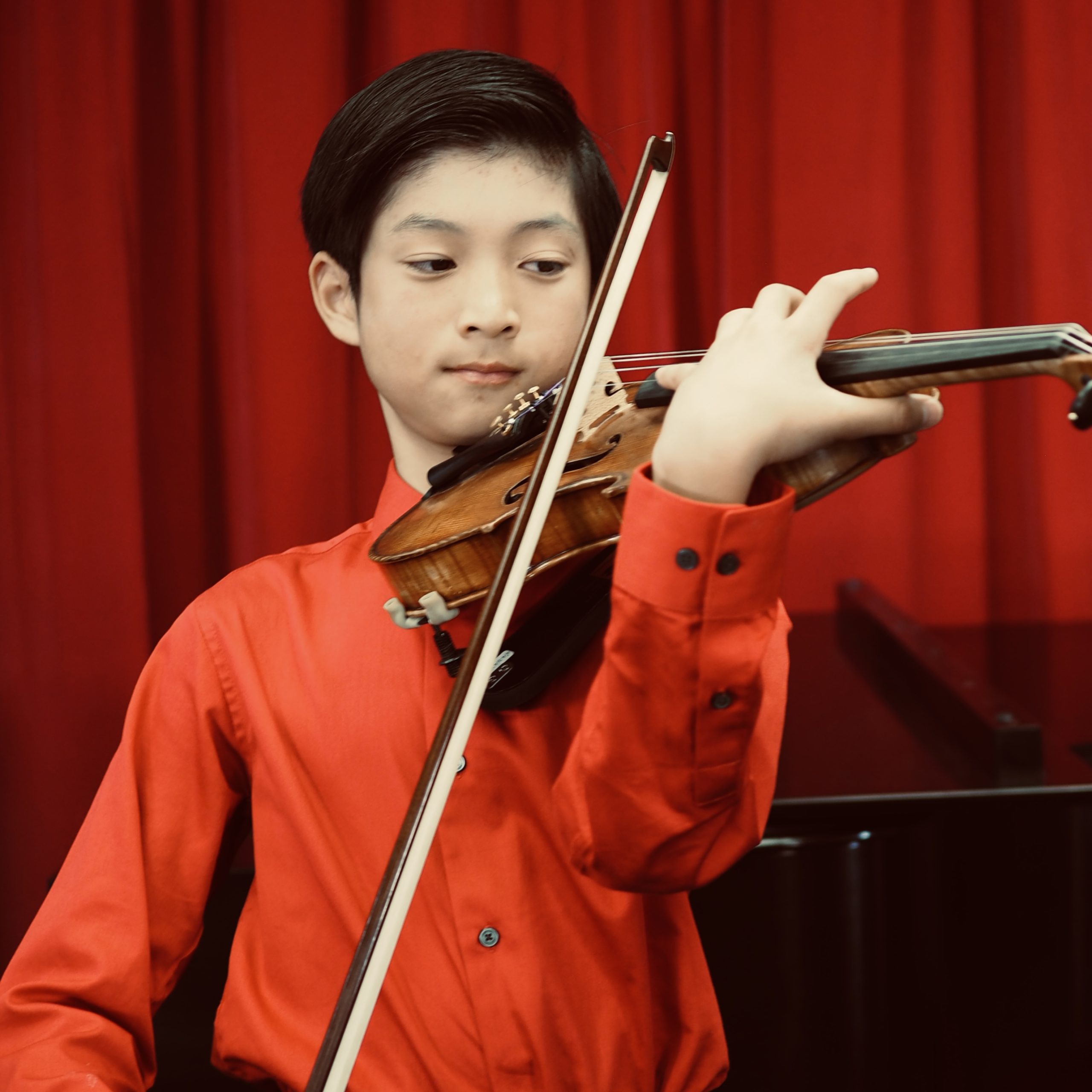
William Lin
violin
First Place winner CAPMT8 Category B (14 & under)
Learn More About William
William Lin is a rising 8th-grader from Irvine, California. William started playing violin at five years old and is now studying at the Mori and Park Violin Studio. In 2019, William won his first violin competition at the Satori Summer Music Festival. The next year, he won first place again at the Satori Summer Music Festival and first place in the Music Teachers’ Association SC. In 2021, William won first place in Britain’s GCC “Best Vivaldi Performance,” received first prize in the “2021 American Protege International Competition (Strings),” and performed solo on the stage of Carnegie Hall, NYC. At the 2023 Satori Music Summer Festival 2023, William and his quartet won the Grand Prize (Soriel Music Ensemble Award). This year, he earned first prize at the Concordia Music Competition and the Concerto Competition of California Association of Professional Music Teachers (CAPMT) OC and JCM, and also represented CalASTA’s 13-18 age group at their recent state competition. William combines his passion for performing violin, serving the community, and actively participates in mini-recitals at various SoCal elderly centers. Beyond playing violin, William also likes swimming.
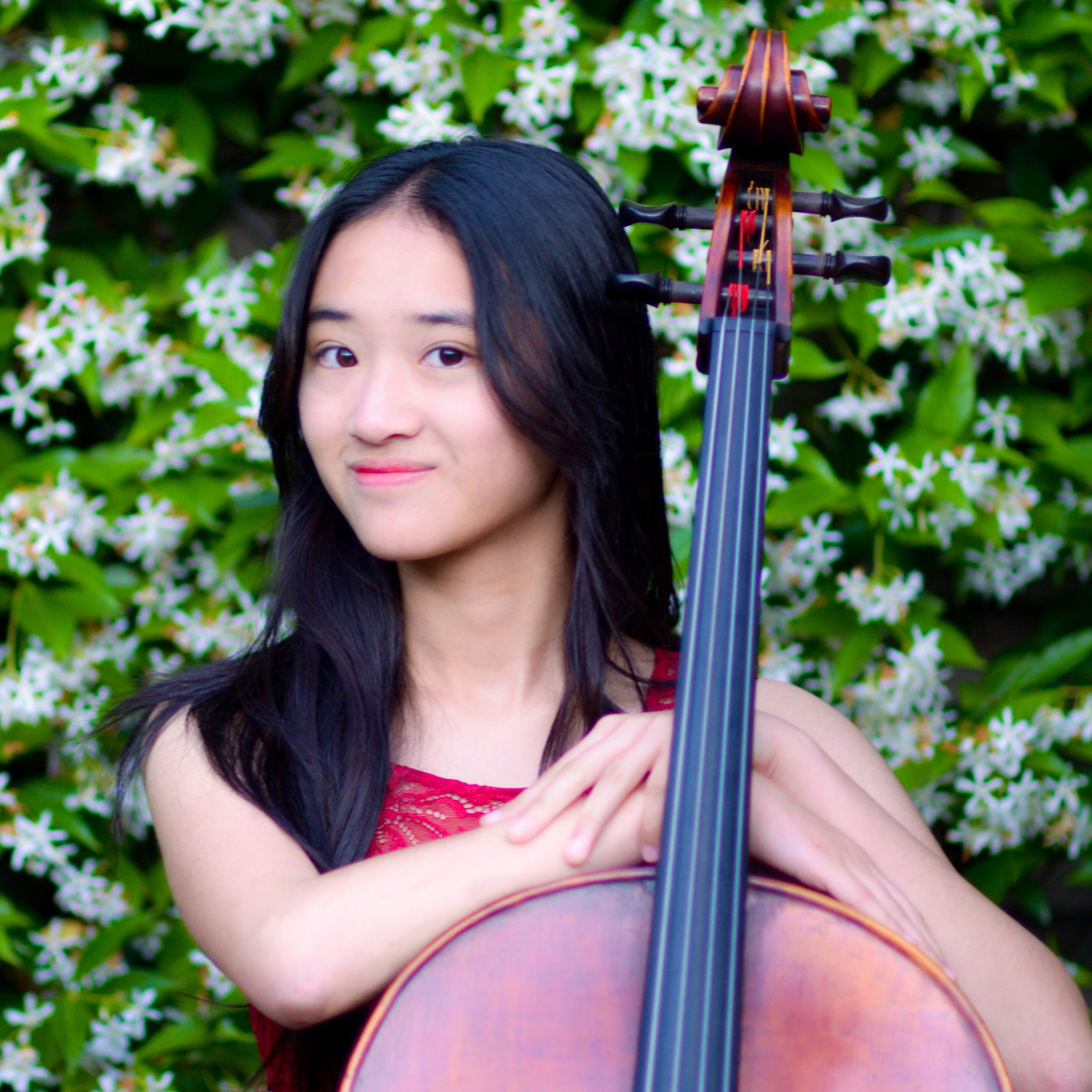
Arianna Lai
cello
First Place winner JCM Category C (21 & under)
Learn More About Arianna
Arianna Lai (15 years old) is a sophomore at University High School, Irvine. She started cello when she was 9 years old, and currently studies with Professor Joon Sung Jun. Arianna has received numerous awards throughout her cello career. As a freshman in high school, Arianna was honored with an Award of Excellence in Performing Art and Outstanding Orchestra Musician in 2024. She has won multiple first prizes at the Junior Chamber Music Concerto Competition, Great Composers Competition, Amici International Music Competition and was awarded scholarships. She was also a grand finalist and honored as Special Achievement Award Winner in the Satori Competition. On top of solo playing, Arianna also enjoys participating in orchestras. In middle school, she performed as principal cellist and soloist of Pacific Symphony Santiago Strings orchestra at Segerstrom Hall and was awarded the Conductor Award in the 2022-2023 season. She has also performed as a principal and soloist in California All State Honor Orchestra. Active in chamber music, she has been an honor member of Junior Chamber Music for two years and recently her trio was selected for the Distinguished Artist Masterclass. She also uses her talent in music to give back to the community by volunteering in a variety of organizations such as Back to Bach and Rancho San Joaquin Middle School. Outside of her busy cello life, Arianna is very passionate about art. Her illustration work has been selected and published nationally and internationally by New York Times One-Pager Challenge, Blick, Pentel and recently been recognized by Scholastic as a regional gold key recipient, advancing her into their national level competition.
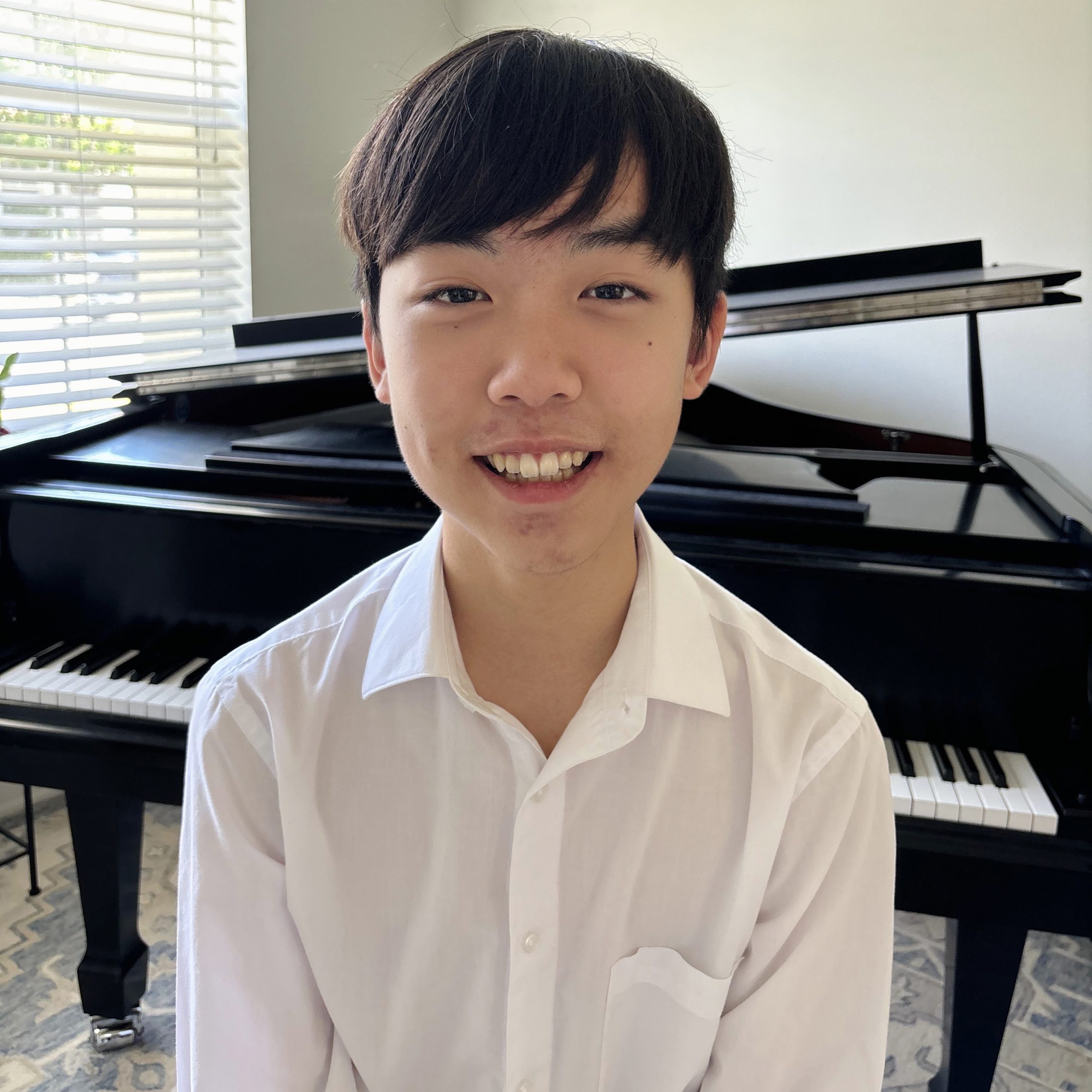
Seojin Park
piano
First Place winner JCM Category B (14 & under)
Learn More About Seojin
Seojin Park, age 14, from Irvine, California, is a rising 9th-grader at Troy High School. A dedicated and accomplished pianist, he studies piano with Dr. Minji Noh. Some of his performance highlights include playing at Carnegie Hall in New York City as one of the prize winners of the American Protege International Piano Competition and being a soloist with Orchestra Nova LA at the Gala Piano Concerto Concert under Maestro Ivan Shulman.
Seojin’s list of accolades includes winning 1st prizes at the Barum International Piano Competition, the Seattle International Piano Virtuoso Festival, and the IAPMT (International Association of Professional Music Teachers) Romantic & Impressionism competition. Most recently, he won 1st prize at the CAPMT OC & JCM Young Musicians Concerto Competition and 2nd prize in the SoCalPhil Young Artists Solo Competition. In addition to competing, Seojin has had the privilege of participating in masterclasses with renowned pianists Robert Thies and Kevin Fitzgerald. Also an avid chamber musician, Seojin has been in the Junior Chamber Music (JCM) Honors program for the past two seasons.
Beyond his musical pursuits, Seojin has a strong passion for science. In 2023, he won 1st place in Solar System at the Science Olympiad State Competition held at Caltech. He continued his success in 2024 by securing 1st place in Meteorology and 2nd place in Reach for the Stars Science Olympiad competitions.
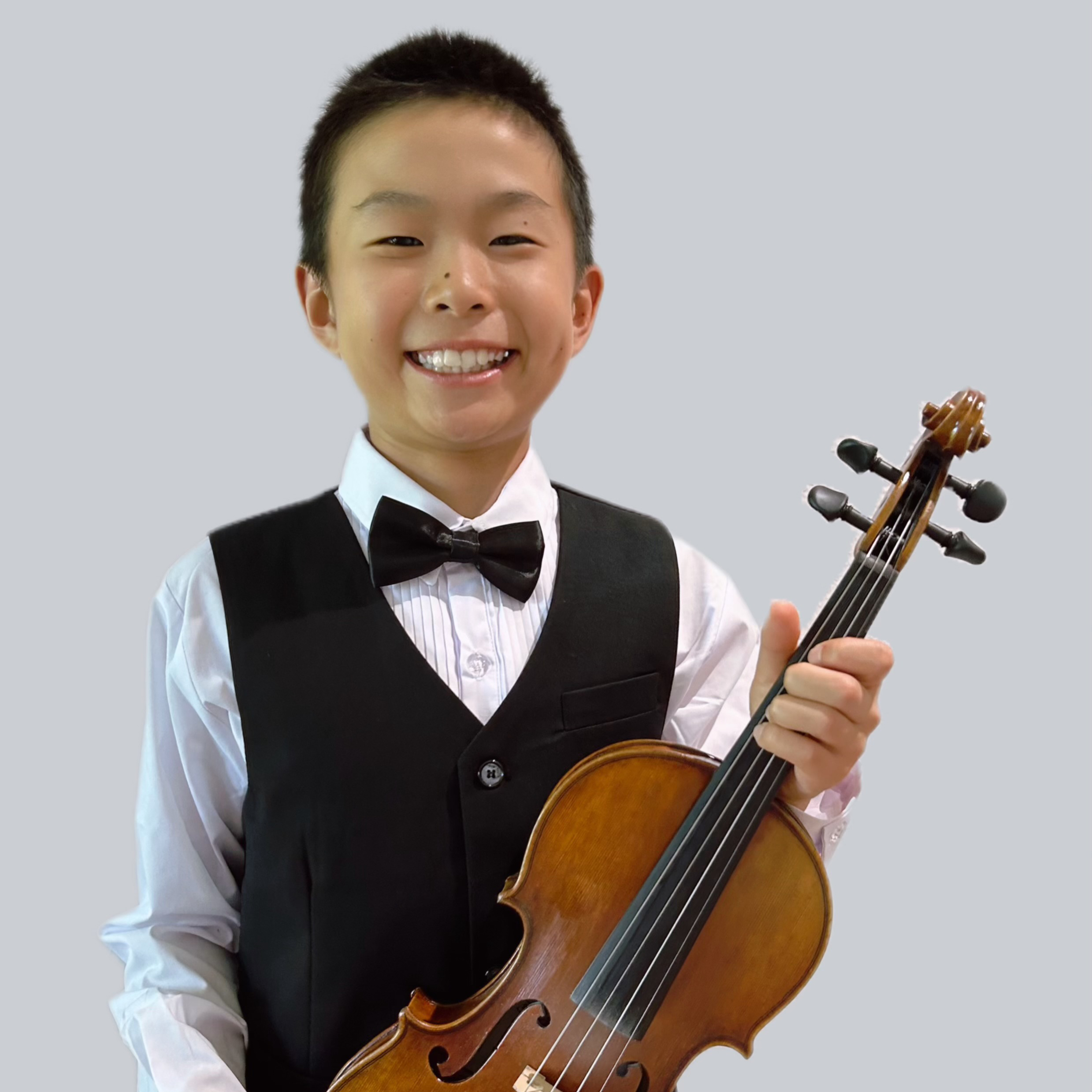
Damon Ko
vioin
First Place winner CAPMT8 & JCM Cateogry A (11 & under)
Learn More About Damon
Damon Ko is a 7th-grader at Cadence Park School in Irvine, CA. He started his musical journey at the age of 5 and is currently studying violin with Yuki Mori and Min Jung Park at The Mori & Park Violin Studio. Damon believes in philanthropy through music and his performance at the 2023 Spirit of Excellence Gala, hosted by the Irvine Public Schools Foundation (IPSF), helped raise generous funds to support art, music, STEM, and athletic programs in Irvine schools. He won 1st place and was a recipient of the Special Award at the 2023 Satori Summer Music Festival and was also placed 1st in his age group at the 2023 Southwestern Youth Music Festival in his age group. Damon is all about strings! When he is not practicing the violin, Damon is working his racquet strings through competitive tennis and is currently one of Southern California’s top 20 tennis players ages twelve and under.
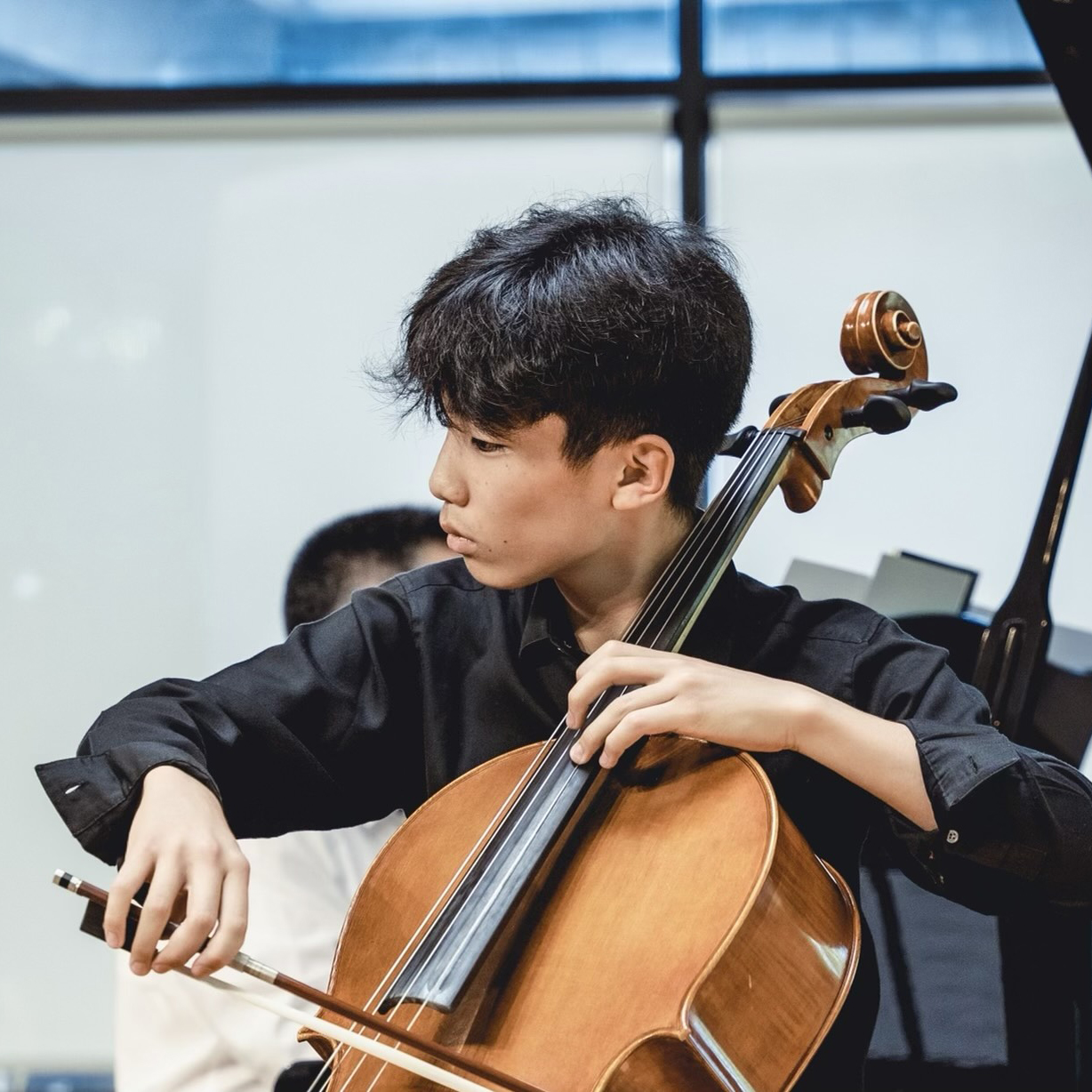
Noah Choi
cello
First Place winner JCM Category C (21 & under)
Learn More About Noah
Noah Choi, a fifteen-year-old cellist, began his musical journey at the age of seven. He is currently studying under Sarah Koo, a graduate of the Juilliard School, and has previously studied with Michael Kaufman and Bonghsin Ko.
Noah’s path took a significant leap forward with his debut performance of Haydn’s C major concerto with the COSB orchestra, an opportunity he earned by winning 1st prize at the 2022 Southwestern Youth Music Festival (SYMF) Young Cellist award. In addition to this achievement, Noah won multiple first prizes at SYMF, the Satori Summer Music Festival String Contest, and was named best string player at the International Arts Competition For Young Performers “COLIBRI.” He also secured first place in CAL-ASTA’s Bowed String Competition, is a scholarship recipient from both Classical Music Encounters of Orange Country (CMEOC) and the Hennings-Fischer Foundation, and is also a finalist at the 25th Osaka International Music Competition. Recently, Noah recorded Shostakovich’s Cello Sonata in D minor with his father, Rufus Choi, under Santa Monica UMC.
Furthermore, he has received mentorship from renowned artists like Robert DeMaine, Jonathan Roozeman, Dmitri Yablonsky, John Walz, Daniel Rothmuller, Ko Iwasaki, and Yue Tang. As an active chamber musician, his trio won first prize at the JCM Chamber Music Competition in 2023 and 2024, as well as first prize in MTAC’s VOCE Chamber Music Competition. His group will also appear on From The Top’s Daily Joy program. Currently, he partakes in Colburn’s Chamber Music Institute (CHMI). During the summer, Noah runs a bi-weekly practice marathon to help young students enjoy practicing while making it more efficient and effective.
Apart from music, Noah enjoys sports and spending time with friends and family.
Meet the Collective
David Rentz, Music Director
FIRST VIOLINS
Joseph Good, Concertmaster
Shirley Chang
Debbie Gagnon
Luis Guerrero
Karyn Haitz
Heidi Hsiao
Elijah Lin
SECOND VIOLINS
Wan-Chin Chang, Principal
Doris Chiang
Anne Cawley
Susan Barnes
VIOLAS
Chad Jackson, Principal
Ellen B. Rice Memorial Chair
Colby Miyamoto
Jacquelyn Su
Hao-Nhien Vu
Brigham Welch
CELLOS
Dzung Nguyen
Effy Huang-Lichtenegger
Ann M. Robinson Endowed Chair
Melissa Bausley
Ryan Phipps
Suzanne La Roque
CONTRABASSES
Chris Hornung, Principal
Corbin Foster
FLUTES
Stephanie Getz, Principal
Christian Azarias
OBOES
Angela Wells, principal
Ann M. Robinson Endowed Chair
Maralynne Mann
CLARINETS
Beta Xinying Chi
BASSOONS
Tracey Siepser, principal
Lesley Frey
HORNS
Brian Pham, principal
Ann M. Robinson Endowed Chair
Kathy Lowe
TRUMPETS
Andrew Rodman, principal
Jonathan Kang
TIMPANI
Bob Forte, principal
Young Musicians Concerto Competition Results
California Association of Professional Music Teachers, District VIII-Orange County Chapter (CAPMT OC)
Junior Chamber Music (JCM)
Orchestra Collective of Orange County (OCofOC)
CAPMT8 (OC) & JCM
Category A (11 & under)
Damon Ko
student of Yuki Mori & Min Jung Park
SECOND PLACE
Alexis Lee
student of Ick-Choo & Hae Young Moon
THIRD PLACE
Maneh Sargsyan
student of Nona Sargsyan
HONORABLE MENTION
Fleur Ancenay
student of Anna Audenis
CAPMT8 (OC)
Category B (14 & under)
FIRST PLACE
William Lin
student of Yuki Mori & Min Jung Park
SECOND PLACE
Sabrina Chang
student of Sangwon Cho
THIRD PLACE
Isabella Yang
student of Emily Hung
Category C (21 & under)
FIRST PLACE
Cameron Oates
student of Yuki Mori & Min Jung Park
SECOND PLACE
Jonathn Chang
student of James Lent
THIRD PLACE
Justin Park
student of Yuki Mori & Min Jung Park
HONORABLE MENTION
Jindong Sha
student of Jun Zhu
JCM
Category B (14 & under)
FIRST PLACE
Seojin Park
student of Minji Noh
SECOND PLACE
Sylvie Kim
student of David Lisker
THIRD PLACE
Anastasia Catanus
student of Laszlo Mezo
HONORABLE MENTION
Jaxon Yoon
student of Eddie Yue
Category C (21 & under)
FIRST PLACE*
Arianna Lai
student of Joon Sung Jun
Noah Choi
student of Sarah Koo
SECOND PLACE
not awarded
THIRD PLACE
Kara Wong
student of Sorah Myung
HONORABLE MENTION
Caleb Fong
student of Amanda Yang
Meet the Co-Producers

CAPMT8 (OC)
California Association of Professional Music Teachers, District VIII-Orange County Chapter is the California State Affiliate of the Music Teachers National Association (MTNA). CAPMT is a 501(c)(3) non-profit music teachers organization of over 1,000 members, teaching in independent studios, private and public schools, conservatories, colleges, and universities throughout California. CAPMT offers a variety of state programs for the music student and education and professional opportunities for its members. CAPMT OC serves the Orange County area.

JCM
Junior Chamber Music provides professional chamber music experience to talented young musicians (instrumentalists and vocalists, ages 9-20) in Southern California. The program started in 2003 under the belief that one of the most powerful ways to learn and experience music is through the power of teamwork. The participants, chosen from annual auditions, are matched in small groups of 2 to 5 people according to their age, level and location. The groups receive coachings from JCM’s roster of world-class musicians in the area and participate in various workshops, tours and concerts.
Program Notes
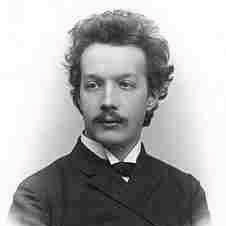
Julius Conus
- Born February 1, 1869; Moscow, Russian Empire
- Died January 3, 1942 (aged 72); Moscow, Soviet Union
Violin Concerto in E minor
I. Allegro molto
The Violin Concerto in E minor by Julius Conus is a hidden gem of the late Romantic period.
Read More
Composed in 1896, this concerto, although less well-known than others of its time, is a showcase of virtuosic violin technique. Conus, a Russian violinist and composer, created a piece that blends lyricism with brilliant technical passages, challenging the soloist to balance musicality with technical skill.
The first movement, Allegro molto, is fast-paced and dramatic, with sweeping violin lines and powerful orchestral support. The soloist is given moments of both bold intensity and delicate phrasing, allowing for a rich emotional contrast.
Historical Context:
Conus, a student of Tchaikovsky, wrote this concerto at the height of Russian Romanticism. Though Conus’s compositional output was limited, this concerto has remained his most enduring work. It reflects the grand, expressive style typical of Russian composers of the era, while also incorporating a French sensibility from his time studying in Paris.
Performance Insights:
The Allegro molto is both fiery and elegant, requiring the violinist to maintain energy while navigating technically demanding passages. The balance between power and finesse is key to delivering an engaging performance of this movement.
COMPOSED
1896 at 27 years old
FIRST PERFORMANCE
March 13, 1898, by violinist Armand Parent, conducted by Édouard Colonne with the Colonne Orchestra in Paris.
APPROX LENGTH
8 minutes
INSTRUMENTATION
2 flutes, 2 oboes, 2 clarinets, 2 bassoons, 4 horns, 2 trumpets, 3 trombones, timpani, strings.
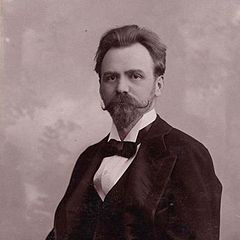
Jenő Hubay
- Born September 15, 1858; Pest, Austrian Empire (now Budapest, Hungary)
- Died March 12, 1937 (aged 78); Budapest, Hungary
Hejre Kati,, Op. 32 No. 4 (Hungarian Csárdás)
Jenő Hubay’s Hejre Kati is a virtuosic violin showpiece, deeply rooted in Hungarian folk traditions.
Read More
Hubay, a prolific composer and teacher, was known for his ability to blend folk elements with classical forms. Composed in 1904, Hejre Kati is based on a popular Hungarian folk song and is written in the style of a csárdás, a traditional Hungarian dance characterized by fast tempos and lively rhythms.
The piece opens with a lyrical introduction that quickly gives way to increasingly rapid, fiery passages. The violin is given center stage, showcasing the instrument’s capacity for both emotional expressiveness and dazzling technical feats. The work’s rustic charm and virtuosic demands have made it a favorite among violinists.
Historical Context:
Hubay was one of Hungary’s leading composers and violin pedagogues, serving as head of the Franz Liszt Academy in Budapest. His compositions, particularly for violin, reflect a strong nationalist influence, drawing heavily on the folk music of his native Hungary.
Performance Insights:
The soloist must capture the vibrant spirit of the csárdás while navigating the fast-paced technical sections. Precision in articulation and rhythm is essential to convey the piece’s dance-like qualities, while the slower, more lyrical sections require expressive phrasing and tone.
COMPOSED
1904 at 46 years old
FIRST PERFORMANCE
Specific performance details are not widely documented, but the piece became popular shortly after composition as part of the Scènes de la Csárda series.
APPROX LENGTH
6 minutes
INSTRUMENTATION
2 flutes, 2 oboes, 2 clarinets, 2 bassoons, 4 horns, 2 trumpets, timpani, strings.
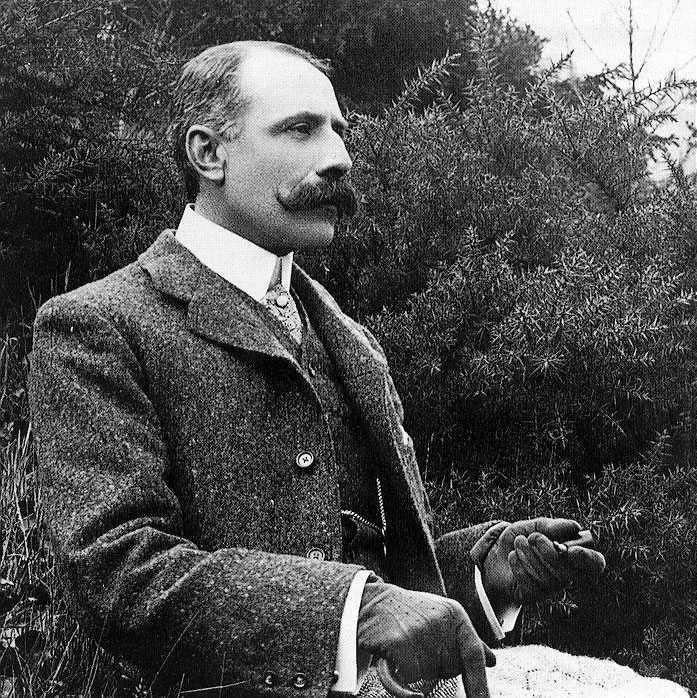
Edward Elgar
- Born June 2, 1857; Broadheath, Worcestershire, England
- Died February 23, 1934 (aged 76); Worcester, England
Cello Concerto in E minor, Op. 85
IV. Allegro – Moderato – Allegro, ma non-troppo – Poco più lento – Adagio
Elgar’s Cello Concerto in E minor is one of the most poignant and introspective works in the cello repertoire.
Read More
Composed in 1919, in the aftermath of World War I, the concerto reflects Elgar’s deep sense of loss and melancholy. The fourth and final movement is a masterful blend of contrasting emotions—ranging from reflective sadness to bursts of optimism—before the work concludes with a profound, meditative adagio.
The movement opens with a vigorous, rhythmically driven section that gradually slows into a more lyrical, introspective passage. The cello’s voice dominates, expressing Elgar’s personal reflections on the devastation of war and the passage of time. The final moments of the movement, marked by a somber adagio, leave a lasting emotional impact on the listener.
Historical Context:
Elgar composed this concerto after witnessing the horrors of World War I, and its somber tone reflects the broader disillusionment of the era. The work was not immediately embraced by critics or audiences at its premiere, but it has since become one of Elgar’s most celebrated compositions, especially after cellist Jacqueline du Pré’s famous recordings in the 1960s.
Performance Insights:
This movement requires the cellist to convey a wide emotional range, from moments of fiery intensity to quiet reflection. The cellist’s ability to transition between these contrasting moods is key to a powerful performance. The adagio section, in particular, calls for deep expressiveness and control.
COMPOSED
1918–1919 at 61–62 years old
FIRST PERFORMANCE
October 27, 1919, Queen’s Hall, London; performed by cellist Felix Salmond, conducted by Albert Coates, with the London Symphony Orchestra.
APPROX LENGTH
8 minutes
INSTRUMENTATION
2 flutes (one doubling piccolo), 2 oboes, 2 clarinets, 2 bassoons, 4 horns, 2 trumpets, 3 trombones, timpani, strings.
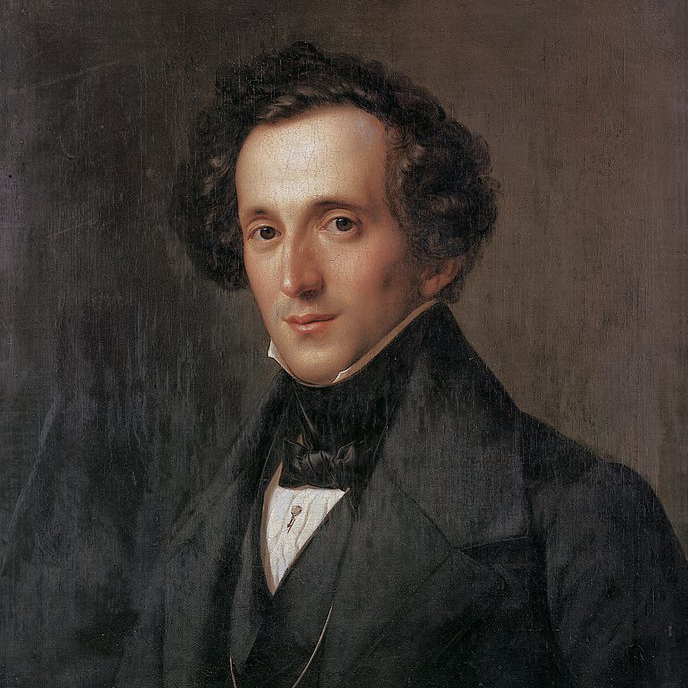
Felix Mendelssohn
- Born February 3, 1809; Hamburg, Holy Roman Empire (now Germany)
- Died November 4, 1847 (aged 38); Leipzig, Kingdom of Saxony (now Germany)
Piano Concerto No. 1 in G minor, Op. 25
II. Presto – Molto allegro e vivace
Composed in 1831, Mendelssohn’s Piano Concerto No. 1 is a brilliant example of his mastery of the Classical and early Romantic styles.
Read More
It was composed during a time of great personal and artistic growth for the composer, shortly after his famous European tours. The concerto is compact yet filled with lyrical melodies and virtuosic demands, showing off Mendelssohn’s youthful energy.
The third movement, Presto – Molto allegro e vivace, is a whirlwind of fast, dazzling passages. The piano and orchestra are in constant dialogue, exchanging rapid runs and playful, spirited phrases. The movement’s lively character makes it a thrilling conclusion to the concerto, showcasing the soloist’s technical ability.
Historical Context:
Mendelssohn was only 22 when he wrote this concerto, which he composed for a tour of Munich. It was an immediate success and became one of the most frequently performed concertos of its time. Despite his early death, Mendelssohn’s legacy as a composer of concertos, symphonies, and chamber music has left a lasting impact on the Romantic period.
Performance Insights:
This movement requires exceptional finger agility and control from the soloist. The interplay between the piano and orchestra demands precision and careful balance. Soloists are expected to bring energy and clarity to the rapid passages, while also maintaining the lightness that Mendelssohn’s style requires.
COMPOSED
1830–1831 at 21–22 years old
FIRST PERFORMANCE
October 17, 1831, Munich, with Felix Mendelssohn as the soloist.
APPROX LENGTH
7 minutes
INSTRUMENTATION
2 flutes, 2 oboes, 2 clarinets, 2 bassoons, 2 horns, 2 trumpets, timpani, strings.
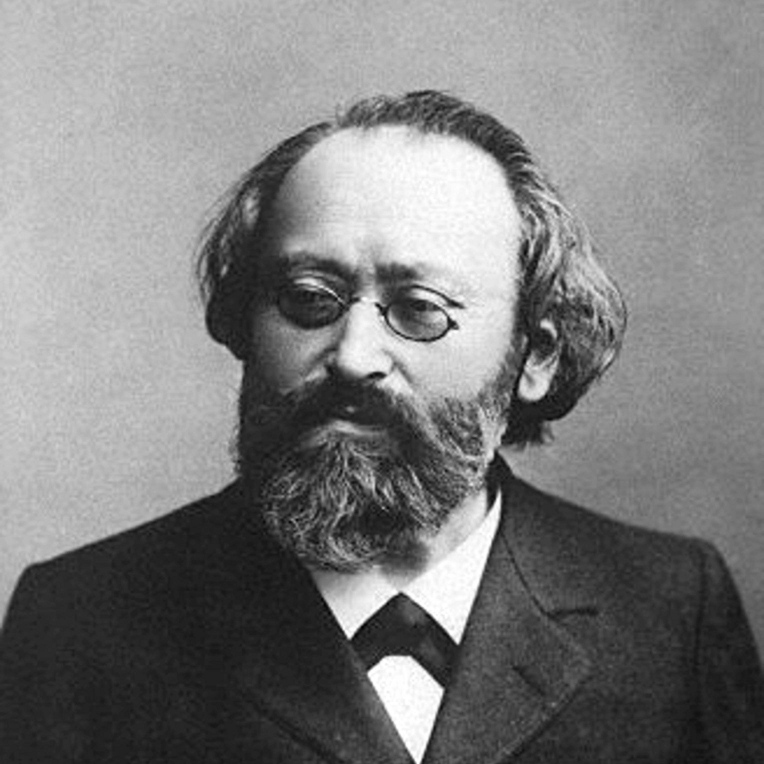
Max Bruch
- Born January 6, 1838; Cologne, Prussia (now Germany)
- Died October 2, 1920 (aged 82); Berlin, Germany
Violin Concerto No. 1 in G minor, Op. 26
I. Vorspiel (Allegro moderato)
Max Bruch’s Violin Concerto No. 1 in G minor, composed in 1866, stands as one of the most beloved works in the violin repertoire.
Read More
Bruch initially struggled with the concerto’s structure, revising it several times with the help of violinist Joseph Joachim, who premiered the final version. The work’s lyricism, passion, and technical demands have made it a favorite of both performers and audiences for over a century.
The opening movement, Vorspiel, serves as a dramatic prelude, immediately capturing the listener’s attention with its dark and brooding orchestral introduction. The violin enters with sweeping, virtuosic lines that alternate between passages of tender lyricism and fiery intensity. This movement transitions seamlessly into the second, emphasizing Bruch’s gift for combining technical brilliance with emotional depth.
Although Bruch composed numerous symphonies, operas, and chamber works, his Violin Concerto No. 1 remains his best-known piece, often overshadowing the rest of his prolific output. Its enduring popularity reflects Bruch’s mastery of orchestral color and the violin’s expressive capabilities.
Historical Context:
Bruch composed the concerto during a time when Romanticism was flourishing in Europe. The concerto’s emotional depth and dramatic contrasts reflect the Romantic era’s emphasis on individual expression. It was premiered in 1868 by Joachim and remains a staple of the violin concerto repertoire today.
Performance Insights:
The Vorspiel movement offers soloists an opportunity to demonstrate both technical prowess and deep emotional expression. Its fiery passages test the violinist’s precision, while the slower, lyrical sections allow for more introspective interpretation.
COMPOSED
1866 at 21 years old (final revisions in 1867 at 29 years old)
FIRST PERFORMANCE
January 7, 1868, by violinist Joseph Joachim, conducted by Hermann Levi, with the Gewandhaus Orchestra in Leipzig.
APPROX LENGTH
8 minutes
INSTRUMENTATION
2 flutes, 2 oboes, 2 clarinets, 2 bassoons, 4 horns, 2 trumpets, timpani, strings.
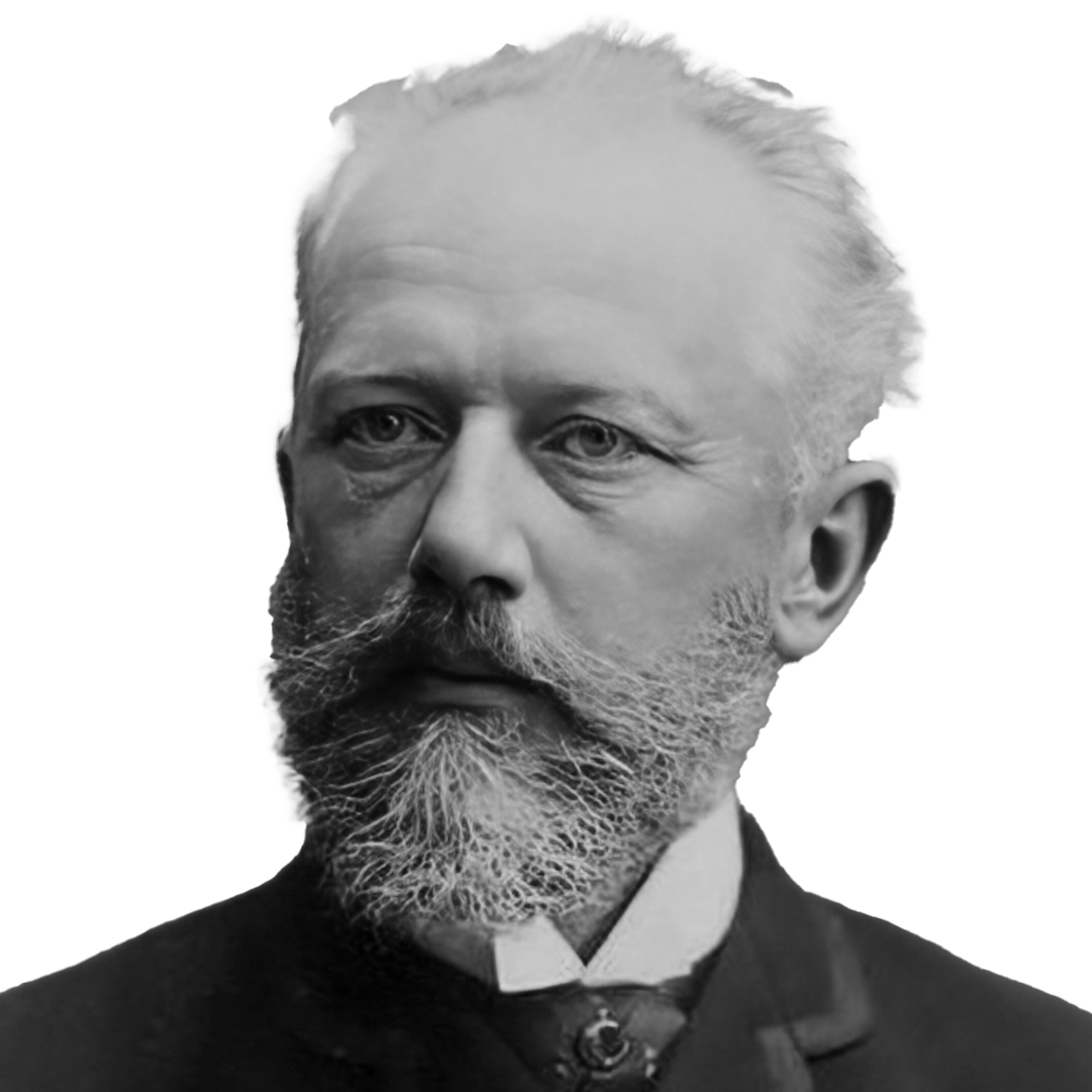
Pyotr Ilyich Tchaikovsky
Born May 7, 1840; Votkinsk, Russian Empire
Died November 6, 1893 (aged 53); Saint Petersburg, Russian Empire
Variations on a Rococo Theme, Op. 33
Tchaikovsky’s Variations on a Rococo Theme is a work that pays homage to the Classical era, particularly the elegance and clarity of Mozart’s music, which Tchaikovsky greatly admired.
Read More
Composed in 1877, this piece is structured around a simple yet graceful theme that is followed by seven variations, each showcasing the soloist’s technical and interpretive abilities.
The variations move through a range of moods and tempos, from light and playful to dramatic and intense. Throughout the piece, the cello takes center stage, with the orchestra providing delicate support. The work’s charm lies in its balance between Classical restraint and Romantic expressiveness.
Historical Context:
Composed during a period of personal and professional turmoil for Tchaikovsky, Variations on a Rococo Theme was his attempt to reconnect with the Classical traditions of the past. It stands out from his other works for its Classical simplicity, as Tchaikovsky often preferred the lush, emotional style of late Romanticism.
Performance Insights:
Each variation presents the cellist with unique challenges, from virtuosic runs to lyrical, singing passages. The soloist must balance the technical demands of the piece with the Classical grace that Tchaikovsky intended. The cello’s ability to project both power and subtlety is key to a successful performance.
COMPOSED
1876–1877 at 36–37 years old
FIRST PERFORMANCE
October 25, 1875, in Boston, conducted by Benjamin Johnson Lang with Hans von Bülow as soloist.
APPROX LENGTH
18 minutes
INSTRUMENTATION
2 flutes, 2 oboes, 2 clarinets, 2 bassoons, 2 horns, strings.